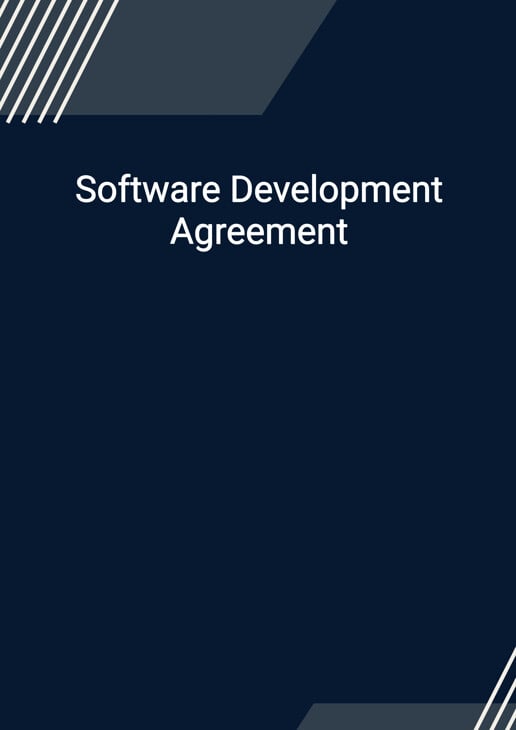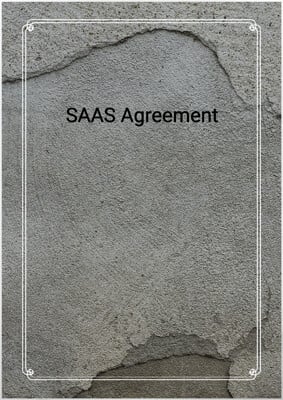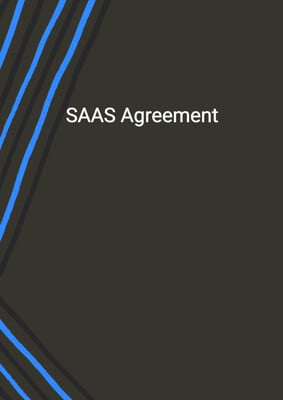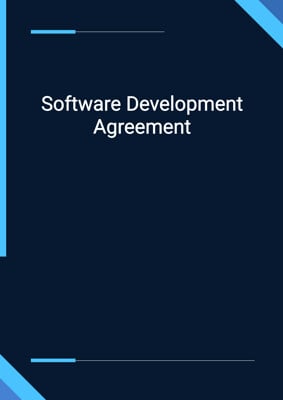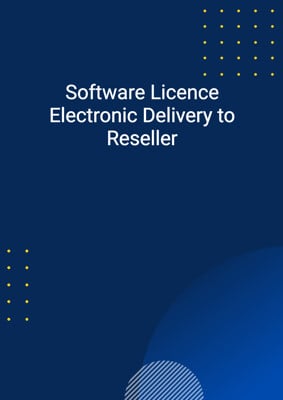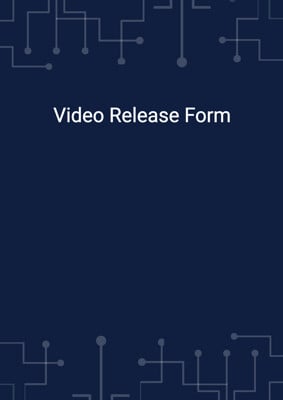How to Tailor the Document for Your Need?
01
Create Document
Fill in the details of the parties. You can click the "Fill with Member’s Information" button to complete it with information saved to your account.
02
Fill Information
Please fill in any additional information by following the step-by-step guide on the left hand side of the preview document and click the "Next" button.
03
Get Document
When you are done, click the "Get Document" button and you can download the document in Word or PDF format.
04
Review Document
Please get all parties to review the document carefully and make any final modifications to ensure that the details are correct before signing the document.
Document Preview
Document Description
The Software Development Agreement is a legal document that outlines the terms and conditions between the developer and the buyer for the development of software. It is important as it establishes the rights, responsibilities, and expectations of both parties involved in the software development process.
The entire document consists of several sections that cover different aspects of the agreement. The first section is the introduction, which provides a brief overview of the agreement and the parties involved. It states that the developer offers software development services, and the buyer desires to retain the developer for the development of software with desired features and capabilities.
The second section is the description of services. It states that the developer will serve as an independent contractor to design, develop, and implement software in accordance with the terms of the agreement. The parties will work together to outline the specifications of the software, timeline, and set expectations for its delivery. The timelines and specifications should be detailed and enforceable to assist both parties in planning and delivery.
The third section covers change in specifications. It states that the buyer may request changes to the specifications or other aspects of the agreement, and the developer will make best efforts to implement the requested changes without additional expense or delay. However, if the proposed changes require a delay or additional expense, the buyer can choose to withdraw the proposed changes or proceed with them subject to the delay or additional expense.
The fourth section addresses further development. It states that for any upgrades, modifications, or projects beyond the maintenance of the current software, a new agreement will be executed, and the services will be contingent upon negotiation of a mutually agreeable fee and the availability of the developer and/or developer's personnel.
The fifth section covers compensation. It states that the buyer will pay the developer a total fee for software development and maintenance. The fee will be paid in accordance with the delivery and payment schedule attached to the agreement. The buyer will also reimburse the developer for out-of-pocket expenses incurred during the development process.
The sixth section is about the term of the agreement. It states that the agreement will commence on the effective date and continue until a specified term beyond the final delivery date of the software to allow for its maintenance.
The seventh section covers termination. It states that the agreement can be terminated if either party defaults in any material obligation, or if either party becomes bankrupt or insolvent. The ownership of software and confidentiality provisions will survive the termination of the agreement.
The eighth section addresses performance and acceptance testing. It states that acceptance testing will follow each key stage of software development, and the buyer will test the software according to the specifications outlined. The buyer will communicate any issues that arise during the acceptance testing, and the developer will review and correct them in a timely manner.
The ninth section is about the ownership of software. It states that the software developed will be the sole property of the buyer, and the developer assigns all rights, title, and interest in the software to the buyer. The developer will keep and maintain records related to the software and assist the buyer in obtaining and enforcing legal protection for the software.
The tenth section outlines the developer's obligations. It states that the developer will comply with the buyer's directions, applicable laws or regulations, and perform its obligations with reasonable care, skill, and diligence. The developer will appoint a competent person in charge and cooperate with the buyer in security arrangements.
The eleventh section covers the buyer's obligations. It states that the buyer must assist in software development and obtain necessary consents in relation to data. The buyer is responsible for the propriety, confidentiality, and use of any data maintained on its computer system.
The twelfth section addresses warranties. It states that the developer warrants that the software developed does not infringe on any third-party copyright. The developer agrees to indemnify the buyer for any copyright infringement claims arising from the software developed. Other than the warranties provided, the developer excludes all other warranties.
The thirteenth section is about the independent contractor relationship. It states that the developer is an independent contractor, and neither party is considered an employee or agent of the other. The developer will utilize employees and/or contractors capable of designing and implementing the software, and the buyer has the right to observe and monitor the developer's performance.
The fourteenth section covers confidentiality. It states that the developer must keep buyer's confidential information confidential and not disclose it to third parties. The developer must return any confidential information upon termination and not use buyer as a reference without permission.
The fifteenth section is about training. It states that the developer will provide training consultations and a user's manual to the buyer. The buyer may request support services after the training period.
The sixteenth section states that no waiver of any provision of the agreement shall be construed as a waiver of any other provision or preclude any other right or remedy.
The seventeenth section addresses severability. It states that the invalidity or unenforceability of any provision does not affect the validity or enforceability of other provisions.
The eighteenth section is about assignment. It states that neither party can assign or transfer its rights and obligations under the agreement without the written consent of the other party.
The nineteenth section states that the agreement contains the entire agreement between the parties and supersedes all prior agreements.
The twentieth section covers governing law and jurisdiction. It states that the parties will use reasonable efforts to resolve any dispute amicably. If a dispute arises, the parties will attempt negotiation in good faith. The agreement is governed by the laws of the relevant jurisdiction.
The twenty-first section states that the headings in the agreement are for reference purposes only and do not limit the meaning of any provision.
The twenty-second section states that the agreement may be executed in counterparts, and electronic signatures have the same authority as original signatures.
The twenty-third section covers notices. It states that notices can be served by hand, email, or post, and the addresses of the parties are provided.
In summary, the Software Development Agreement is a comprehensive document that covers various aspects of the agreement between the developer and the buyer. It outlines the services to be provided, the compensation, the ownership of software, confidentiality, and other important provisions. It is important for both parties to carefully review and understand the terms and conditions before entering into the agreement.
How to use this document?
Step-by-step guidance for using the Software Development Agreement:
1. Review the entire agreement: Read the entire agreement carefully to understand the rights, responsibilities, and expectations of both parties involved in the software development process.
2. Define the software specifications: Work together with the developer to outline the specifications of the software, including desired features and capabilities. Ensure that the specifications are detailed and enforceable.
3. Discuss timelines and expectations: Set clear timelines for the delivery of the software and define expectations for each phase of development. Ensure that the timelines are realistic and achievable.
4. Request changes if necessary: If there is a need to make changes to the specifications or other aspects of the agreement, communicate your requests to the developer. The developer will make best efforts to implement the changes without additional expense or delay.
5. Consider further development: If there are plans for upgrades, modifications, or additional projects beyond the maintenance of the current software, discuss and negotiate a new agreement with the developer.
6. Agree on compensation: Determine the total fee for software development and maintenance. Review the delivery and payment schedule attached to the agreement. Discuss reimbursement for out-of-pocket expenses.
7. Perform acceptance testing: Test the software according to the specifications outlined in the agreement. Communicate any issues that arise during the acceptance testing to the developer. The developer will review and correct the issues in a timely manner.
8. Ensure ownership of software: Confirm that the software developed will be the sole property of the buyer. The developer will assign all rights, title, and interest in the software to the buyer.
9. Comply with obligations: Both parties should comply with their respective obligations as outlined in the agreement. The developer should perform its obligations with reasonable care, skill, and diligence.
10. Maintain confidentiality: Keep all confidential information received from the buyer confidential and do not disclose it to third parties without permission. Return any confidential information upon termination.
11. Provide training and support: Take advantage of the training consultations and user's manual provided by the developer. Request support services if needed after the training period.
12. Seek legal advice if necessary: If you have any concerns or questions about the agreement, consult with a legal professional to ensure that your rights and interests are protected.
Note: This guidance is provided for informational purposes only and should not be considered legal advice. It is important to consult with a legal professional to address specific legal concerns and ensure compliance with applicable laws and regulations.
Not the right document?
Don’t worry, we have thousands of documents for you to choose from:
